Third-Party Efficacy Study
HumuloVR Safety
Training
Overview
Central Washington University Third-Party Study:
HumuloVR Safety Training
“100% of the experimental group thought using the Humulo Virtual Reality training increased their comprehension of the course material”
HumuloVR safety training products were selected to be part of a third-party study designed and carried out at Central Washington University (CWU) in 2022. CWU is a public university in Ellensburg, Washington with a total of eight Washington state campuses. The University offers vocational types of programs among other academics.
A goal of the study, designed and led by Dr. Hongtao Dang Ph.D. and Dr. Jennifer Serne Ph.D., was to determine to what degree the more traditional school-based and physical simulations learning would be improved using Virtual Reality safety training tools. Quantitative and qualitative data would be derived from the study’s design.
Post-study quantitative data contrasting VR users with non-users has determined that Humulo Virtual Reality training improves both learner comprehension and learner longer-term retention to a significant extent.
Post-study qualitative input by the experimental user group confirmed the learner-friendliness of the VR experience, as well as heightened self-confidence with and understanding of the safety processes taught.
The Study & HumuloVR’s Contribution
In the first half of 2022, Central Washington University proposed that two of its professors would design and perform a third-party study using Virtual Reality safety training such as HumuloVR designs and markets.
HumuloVR agreed to participate with their only involvement being to provide their off-the-shelf VR headsets with the module software. The study leaders, Dr. Hongtao Dang Ph.D. and Dr. Jennifer Serne Ph.D. chose two HumuloVR Library modules for the study: Fire Safety and Confined Space Entry (details found in the HumuloVR Library on https://humulo.com/product-category/training/).
HumuloVR did not fund or administer any part of the study. The professors understood that HumuloVR trainings are designed for a general population of industrial workers. Phase 1 of the study would, however, involve students only, and be used in this study as an adjunct to the traditionally-led lab/classroom simulation training.
All phase 1 participants were enrolled in CWU’s Safety and Health Management Program who were studying to become Occupational Safety and Health (OS&H) Professionals. As the university offers vocational-type programs, the purpose of the study was to examine the nature of the outcomes related to adding the HumuloVR safety training programs to the University’s traditional Safety curriculum.
The Study
The participants were divided into two test groups. 20 individuals completed the study as members of the Control Group. 17 individuals completed the study as part of the Experimental Group (participants who used the VR module). Data for participants who completed the study came from the standard programming within the HumuloVR headsets themselves, as well as from the pre/post/retention testing designed and administered by the professors.
Both groups were pre-tested on knowledge. They were also immediately post-tested on comprehension of the material with the same test questions. Both groups took the usual classroom/lab sessions, doing the hands-on classroom physical exercises (simulations) using propane fire and fire extinguishers for fire safety, along with performing the usual confined space entry simulation. Both are typical training protocols in such settings.
The Experimental Group added the Virtual Reality training to both of these classroom trainings, whereas the Control Group benefited from the only classroom sessions for both.
It must be noted that classroom mock-ups in neither of these trainings can ever create a full real-world context for action, while the Virtual Reality trainings HumuloVR has built-in scenarios that are quite life-like. It must also be noted that the HumuloVR training modules are approximately 20 minutes in length from start to finish, can be repeated at will, and have embedded scoring.
Quantitative Outcomes
Quantitative outcomes were obtained through three tests, summarized, and provided to HumuloVR at the study’s end by the professors. Identical pre-tests were administered to Experimental and Control group members, the two programs were carried out, then followed immediately by identical post-tests for all students. 30 days later, the same final post quiz was administered to both groups to determine retention.
- The VR Experimental Group tested 6% better in its aggregate scores than the non-VR Control Group. Notably, this increase resulted from just 20 minutes of VR training on each topic, at least 30 days prior to the final evaluation.
- Taken participant by participant, Virtual Reality Experimental Group scores were better by up to 30% on individual questions on confined space knowledge.
- As a group, the VR users improved in their overall before-to-after testing scores in both trainings by 10-20%, while the Control Group did not uniformly improve.
- None of the Experimental Group got worse average scores post-experience. Some of the Control Group had averaged post-scores lower by 8-31%.
Qualitative Outcomes
Qualitatively, 100% of the members of the VR group thought using Virtual Reality helped them learn more and better. The VR Experimental Group participants responded in writing to this question:
“Do you feel that taking the VR training helped your comprehension
of the course material related to fire extinguishment and confined spaces?”
The participant’s qualitative verbatim comments below showed 100% user satisfaction with the content (brackets added for clarity):
- I believe the VR experience helped my learning. I learn better with hands-on experience and the VR equipment gave me exactly that. I remembered things better.
- I think getting the extra practice definitely helped. Most of what I soaked in from the fire extinguishment and confined spaces lessons were from the VR training quizzes.
- I do think it helped; after the VR, I was really good at putting out the real fire. I got the first level out first try. Also helped me comprehend how to use the extinguisher and all the rules and requirements related to confined spaces because you had to do it.
- It made me feel like I was hands-on in a real world situation.
- I think the VR training was relatively helpful in understanding. There are certain steps that you are forced to complete before you can move on in the [VR] training which is beneficial for understanding.
- Yes, 100%. It’s more helpful. By doing the VR you are forced to pay attention and comprehend what exactly the content is about.
- Yes, [the VR helped] because it showed the accident happen and then we had to take action.
- I do feel that the VR helped with my comprehension. When I was asked the previous questions, I was brought back to the experience I had in VR; remembering what I did [helped me] find the answer.
- If there was something I wasn’t understanding, the VR training would help clarify by getting to do it hands-on.
- [The VR] created a believable scenario/environment for these situations.
- There are multiple different sections to each VR experience and all of them are hands-on, which I think is a better way of learning for me.
- I do think that it helped with the comprehension, especially with the quiz portion, because I was able to understand the specific terminology through the quiz but then also learn the physical proper way to use a fire extinguisher [with the VR training].
Reinforcement of Other Market Case Studies
It is notable that the quantitative and qualitative outcomes of this CWU third-party study have reinforced past Virtual Reality training surveys and studies that multiple industry researchers have published. Two reminders of some of those outcomes:
Price Waterhouse Cooper already knew that VR learning for hard skills training (such as the safety training HumuloVR develops) was both efficient and effective in its skill development. But what about soft skills? In this PwC study of how VR learning could enhance soft skills training, it chose a group of new managers from 12 of its U S locations for a study using for its topic “inclusive leadership”. It used three learning modalities—traditional classroom, e-learning and v-learning or Virtual Reality. The results by the Virtual Reality learners were significantly different. These learners learned four times faster than the classroom learners. They were 275% more confident about applying skills they learned after their training. They felt 3.75 times more emotionally connected to the content than classroom learners did. And the VR experience gave them 4 times the focus over their e-learning peers. Read more here—https://www.pwc.com/us/en/tech-effect/emerging-tech/virtual-reality-study.html
In a roundup of the most recent multi-industry research and case studies, Axon Park summarized major findings of using Virtual Reality in training and education, including:
- VR-trained students show a 250% improvement in their ability to accurately complete a safety procedure over standard didactic training only, while retention is over 3 times better.
- Virtual Reality trained surgeons were 29% faster and made 6 times fewer errors in a Yale University VR training case study of gallbladder dissection procedures.
- VR training is 83% less expensive and 50% faster than traditional in-person simulations. This was Walmart’s discovery when they provided their learners with Virtual Reality modules. This outcome has led them to roll out Virtual Reality education in their 200 training centers.
Read much more here—https://axonpark.com/how-effective-is-vr-training-13-case-studies-and-examples/
In Summary
In the Central Western University study, the retention metric—retesting 30 days after the post-test—showed the Experimental Group of VR learners had retained higher average levels of knowledge. On more difficult concepts such as confined space entry, the Experimental VR Group saw as much as 30% higher scores on individual questions versus the Control Group. Because fire training concepts are much simpler, and potentially more familiar to the general public, not as high a variable was seen on those pre/post/retention scores. 100% of the learners thought Virtual Reality was useful for training and wanted it included in the future safety training classes of their CWU Safety Program.
HumuloVR safety training builds the scenarios needed for the learners to put themselves in the real-world contexts faced on the job, whereas the physical classroom simulations cannot create a full context. In fact, in the confined spaces training, the VR experience defines what a confined space is much more fully than classroom training can.
It should be noted, this phase 1 study was conducted on college age students who were actively studying industrial safety to become safety experts. HumuloVR training is currently designed to reinforce largely foundational knowledge, the fact that the experimental groups showed discernably higher scores than the control group using only knowledge exams as the quantitative measurement is notable. The researchers expect a significant outcome in follow on experimental phases with industrial workers.
Future Projects
These outcomes proved so positive from a learning-and-comprehension standpoint following their experience running the study that the study leaders made two decisions.
Firstly, they plan to purchase the HumuloVR system for permanent use in their classes.
Secondly, the professors state that there is no doubt that the same study with blue-collar workers would show even more pronounced advantages for the HumuloVR training over traditional physical simulation training. The professors are thus applying for multiple grants to continue the research with the HumuloVR trainings and have approached several construction companies to enroll actual employees as test subjects. The research team expects to initialize phase 2 of the study in Fall 2022.



